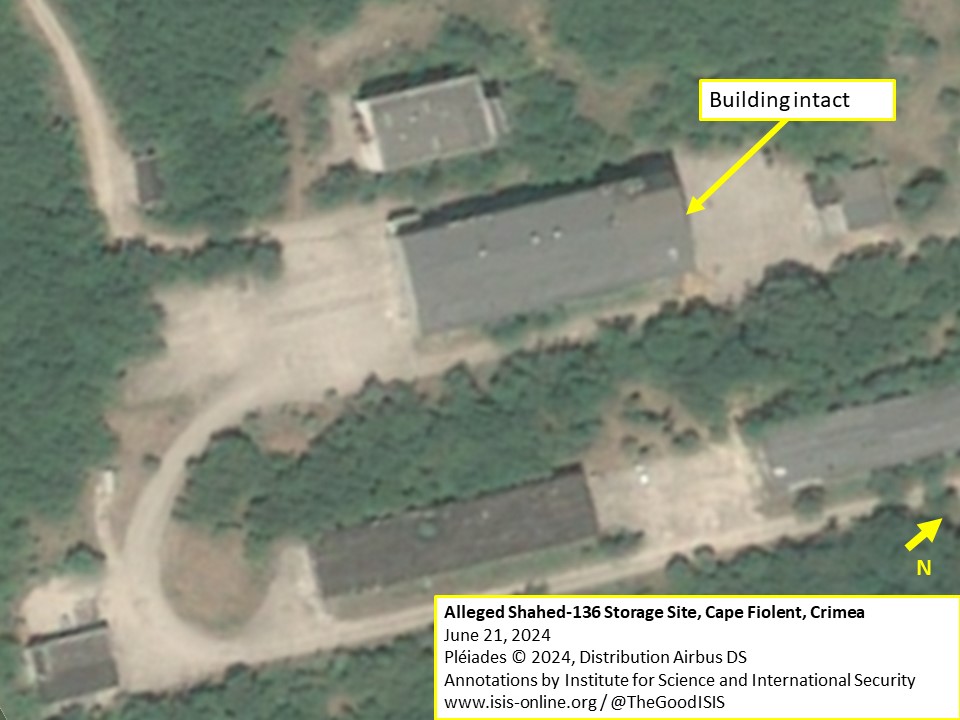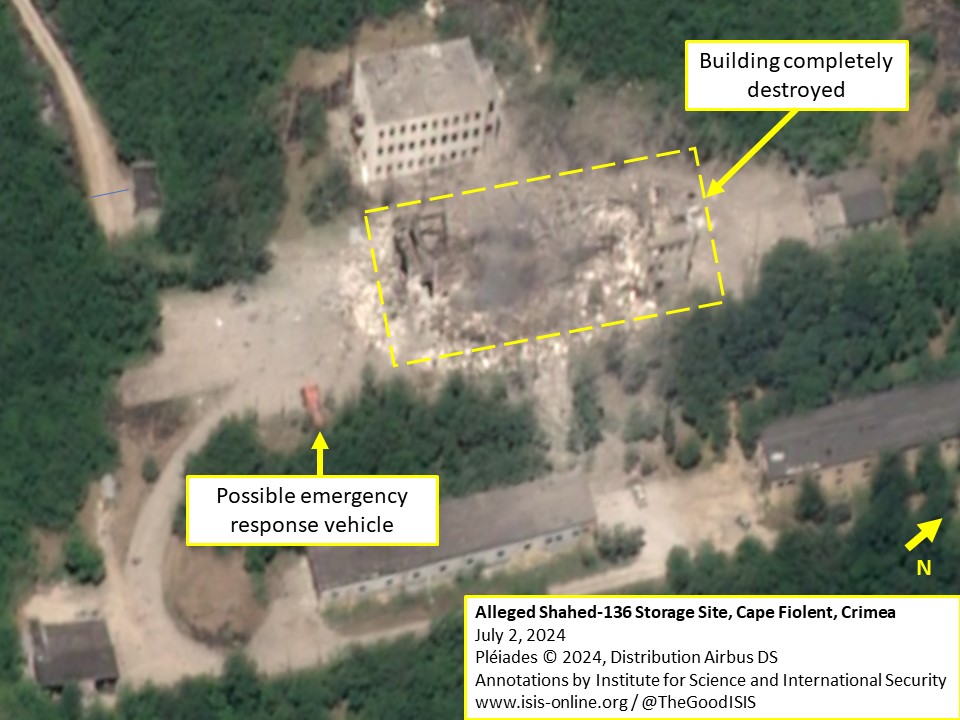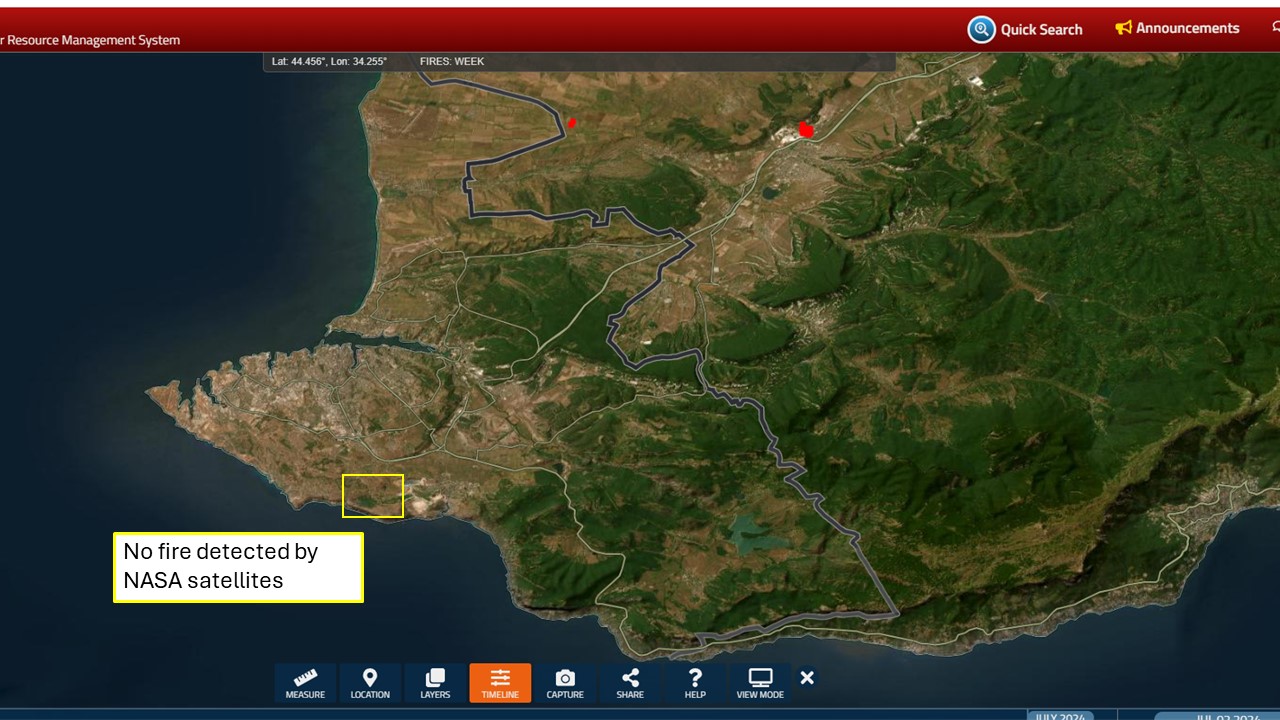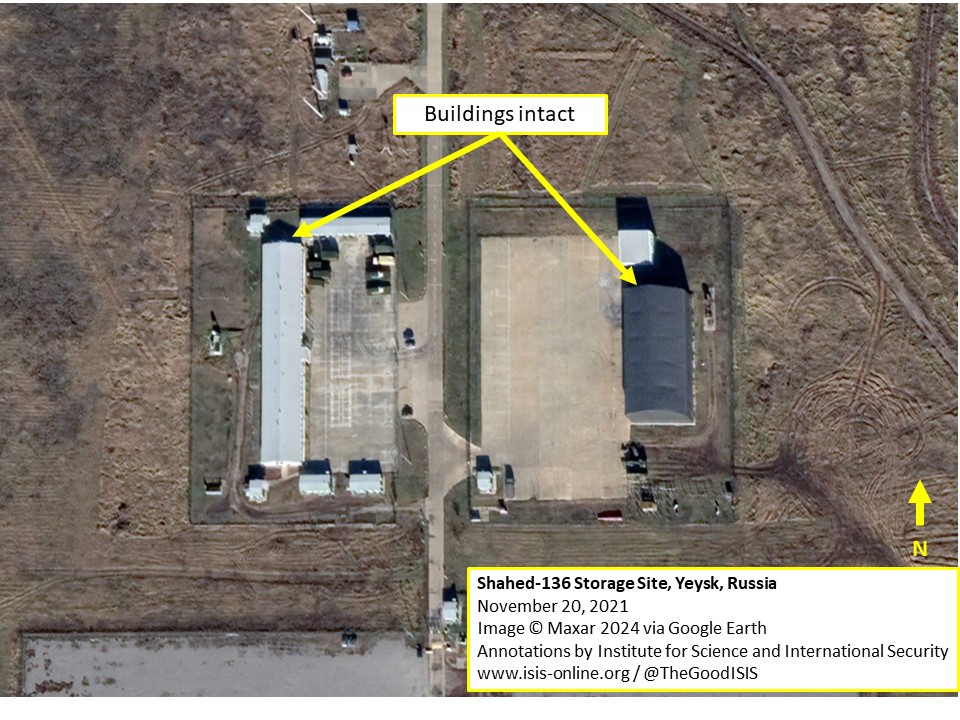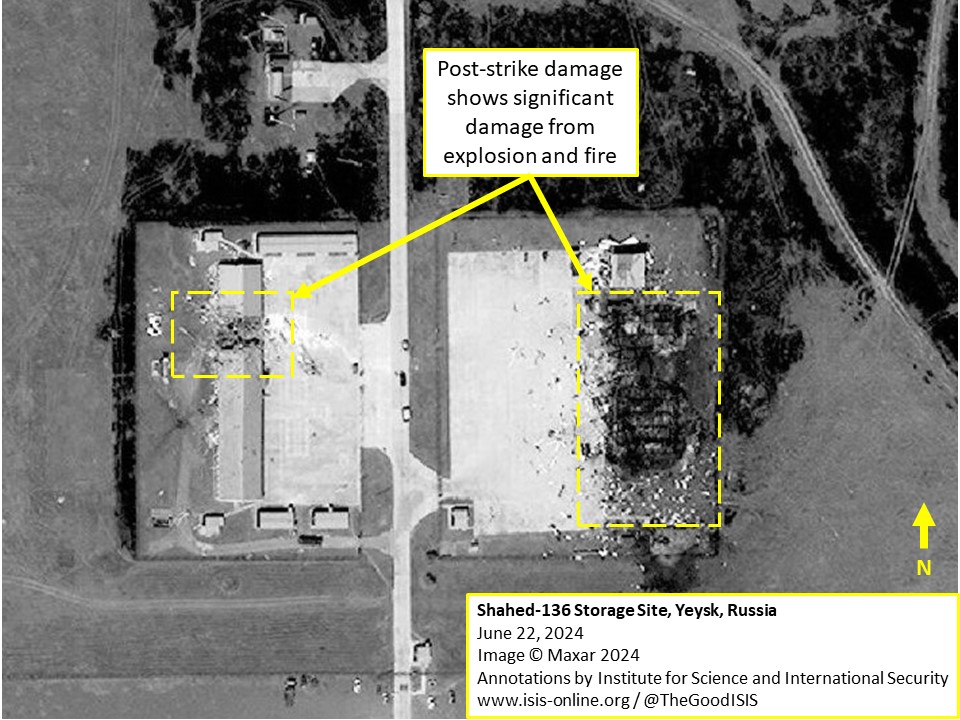In the last few weeks, two Ukrainian strikes targeting Russia's ability to launch Shahed-136 kamikaze drones were reported, one in Cape Fiolent, Crimea, and one in Yeysk, Russia. Commercially available high resolution satellite imagery of the two sites show significant damage. Even if Russia can recover its lost launch capabilities quickly, to avoid a repeat, it will likely move them further inward, requiring longer flight paths and decreasing the overall efficiency of their drone operations.
Background
The first strike was conducted on June 21 and declared by the Ukrainian Navy as Shahed-136 "storage and preparation facilities, training buildings, control and communication points" in Yeysk, Russia. [1] The Navy shared an image of two buildings that were targeted at the site. It later updated its post stating that the attacked facilities were part of the military training ground of the 726th Air Defense Training Center, air defense unit #33859, "engaged in training and preparing military personnel to use various types of UAVs." It listed that 20 Shahed drones were destroyed, as well as 50 Lancet UAVs, 40 ZALA UAVs, and 10 SuperCam UAVs. [2] The second strike was conducted on July 1, declared by the Ukrainian Air Force as an "ammunition depot", near Sevastopol, Crimea. [3] The popular Telegram channel @dosye_shpiona posted an alleged ground photo of the site and reported that the target was a Shahed-136 storage site, storing about 90 Shahed drones. [4] Yeysk and Cape Fiolent are two of five main launch sites of Shahed 136 drones. The other three are Primorsko-Akhtarsk, Kursk, and Cape Chauda, Crimea.
Satellite Imagery
In response to the news, the Institute quickly purchased and analyzed high resolution satellite imagery of the two sites. It combined these images with information from NASA's fire information satellite and Ukrainian Telegram channels.
Cape Fiolent
Figure 1 shows pre- and post-attack images of the site at Cape Fiolent. One of the buildings has completely collapsed. Of note, NASA satellites did not pick up any fire in the area in that week (see Figure 2). Reportedly, the strike was carried out using an aircraft-launched missile, [5] and the site was also known as abandoned military base #99375, which previously belonged to the USSR Navy. [6]
Yeysk
Figure 3 shows pre- and post-attack images of the Shahed storage and launch preparation site in Yeysk, Russia. The image shows that the two buildings identified by the Ukrainian Navy sustained significant damage from explosions and fire. In line with this, the NASA FIRMS database reported a fire at the specific coordinates of the site (see Figure 4.) Reportedly, at least one of the strikes was carried out by drones. [7] According to other reports, Ukrainian Neptune missiles could have been used. [8]
Conclusion
The different damage signatures could be indicative of the different types of strikes, or different contents of the buildings, where a large explosion and fire is more consistent with Shahed drones that are fueled up and armed with a warhead, ready for launch.
Although Shahed launches continue from other sites, Ukrainian official sources have not yet reported any launches from Yeysk or Cape Fiolent following the corresponding Ukrainian strikes on those sites.
Figure 1. Top: An Airbus Pleiades image predating the attack on the alleged Shahed-136 storage site. Bottom: Shortly after the reported attack, one of the main buildings at the site is completely destroyed. 44°30'24.93"N, 33°32'25.07"E.
Figure 2. A screenshot from the NASA Fire Information for Resource Management System (FIRMS) database shows that its satellites did not pick up any significant fire at the site during the week of the attack.
Figure 3. Top: A Google Earth image predating the attack on the Shahed-136 storage and launch preparation site. Bottom: Both main buildings at the site show damage. The building to the east especially shows significant damage from explosions and fire, with a large radius of fallen debris and an inside that is burned out. 46°40'34.48"N, 38° 7'49.75"E.
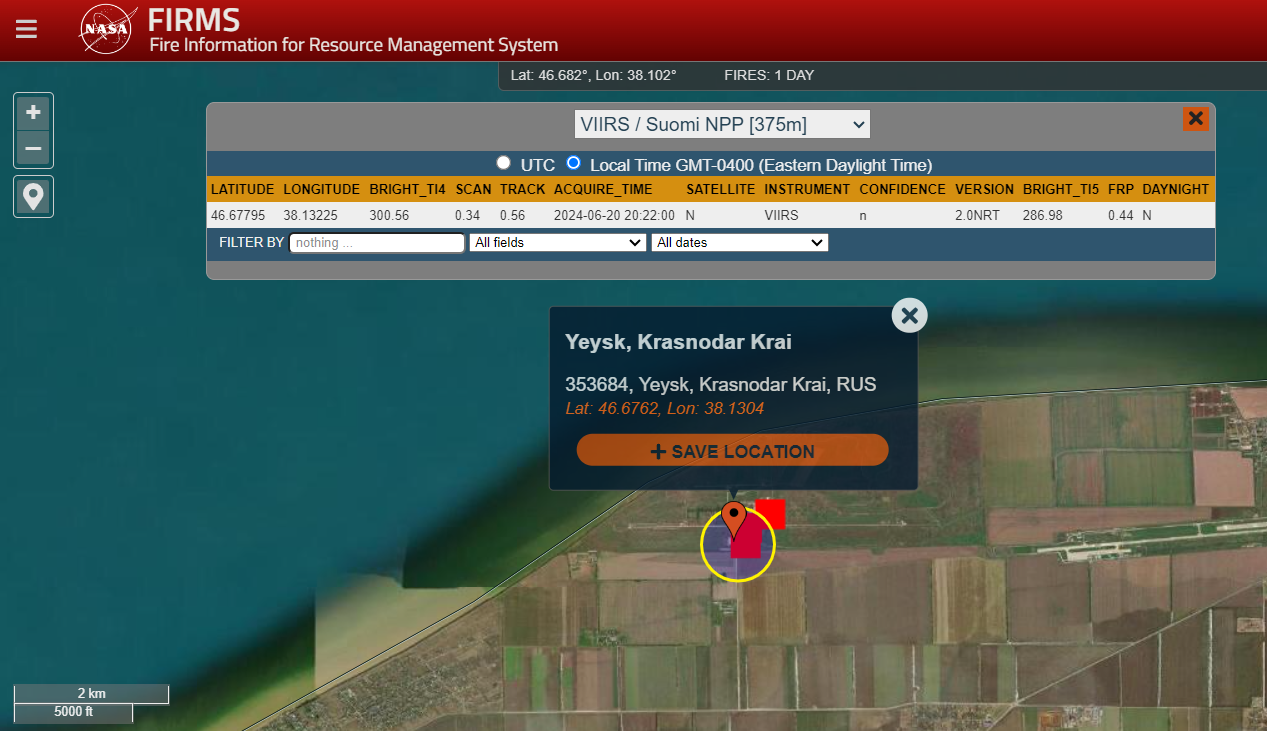
Figure 4. Consistent with the visible damage from fire, the NASA FIRMS database picked up significant fire at that site the night of the attack. The site shows significant damage from explosions and fire.
1. Telegram channel Ukrainian Navy, June 22, 2024,https://t.me/ukrainian_navy/7004.[↩]
2. Telegram channel Ukrainian Navy, June 24, 2024,https://t.me/ukrainian_navy/7047. [↩]
3. Telegram channel Ukrainian Air Force, July 2, 2024,https://t.me/kpszsu/16062. [↩]
4. Telegram channel @dosye_shpiona, July 2, 2024,https://t.me/dosye_shpiona/553. [↩]
5. "About 90 Shahed Drones Eliminated by Ukrainian Forces During Attack on Temporarily Occupied Crimea," Defense Express, July 3, 2024,https://en.defence-ua.com/news/about_90_shahed_drones_eliminated_by_ukrainian_forces_during_attack_on_temporarily_occupied_crimea-11046.html. [↩]
6. Telegram channel @monitorwar, July 2, 2024,https://t.me/monitoringwar/10833?single. [↩]
7. "Ukrainian drones strike Russian military training base in Yeysk," The New Voice of Ukraine, June 24, 2024, https://english.nv.ua/nation/ukrainian-drones-strike-russian-military-training-base-in-yeysk-50429819.html. [↩]
8. Telegram channel DniproOfficial, June 21, 2024,https://t.me/DniproOfficial/3772. [↩]

